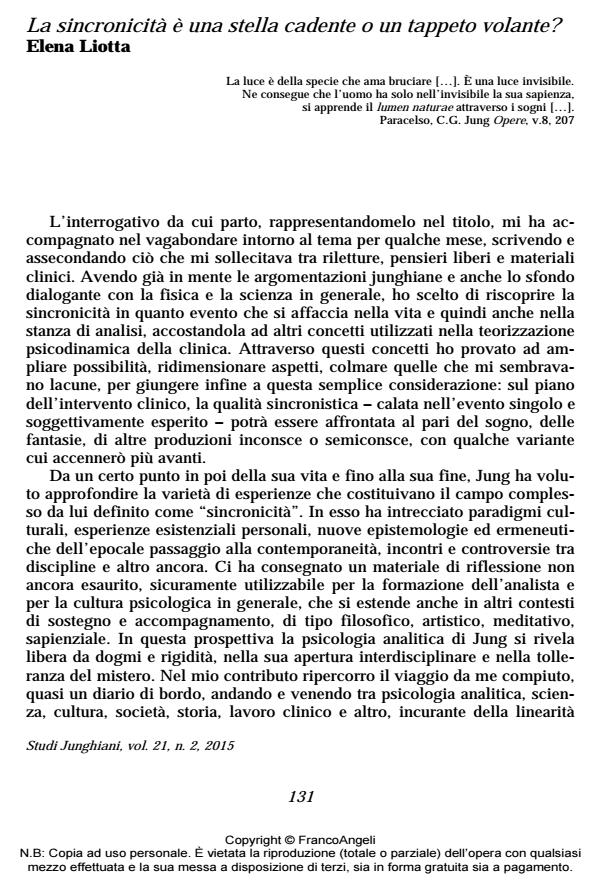Synchronicity is like a falling star or a flying carpet?
Journal title STUDI JUNGHIANI
Author/s Elena Liotta
Publishing Year 2016 Issue 2015/42
Language Italian Pages 24 P. 131-154 File size 90 KB
DOI 10.3280/JUN2015-042008
DOI is like a bar code for intellectual property: to have more infomation
click here
Below, you can see the article first page
If you want to buy this article in PDF format, you can do it, following the instructions to buy download credits

FrancoAngeli is member of Publishers International Linking Association, Inc (PILA), a not-for-profit association which run the CrossRef service enabling links to and from online scholarly content.
The different forms of the synchronistic phenomenon are analyzed to evaluate its presence and significance at a clinical level. Psychodynamic aspects of the experience according to different analytical orientations (Jung, Hillman, Bion) are confronted also in the light of historical and cultural paradigms between East and West. The central role of interpersonal relationship is considered as energetic field, symbolic experience, body/mind and psyche/matter inter-connectedness, individual and group positions.
Keywords: Relationship, Nature, Symbol, Non-linearity, Soul, Healing
Elena Liotta, La sincronicità è una stella cadente o un tappeto volante? in "STUDI JUNGHIANI" 42/2015, pp 131-154, DOI: 10.3280/JUN2015-042008